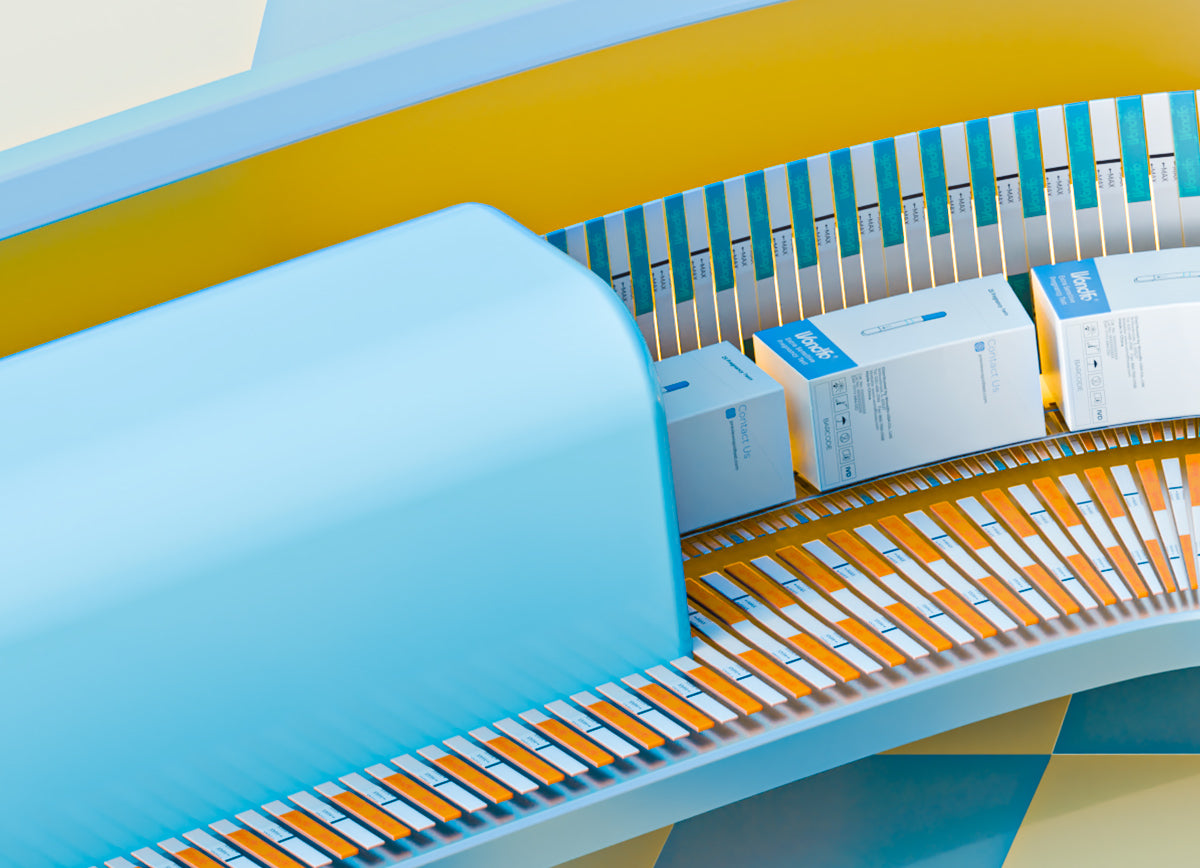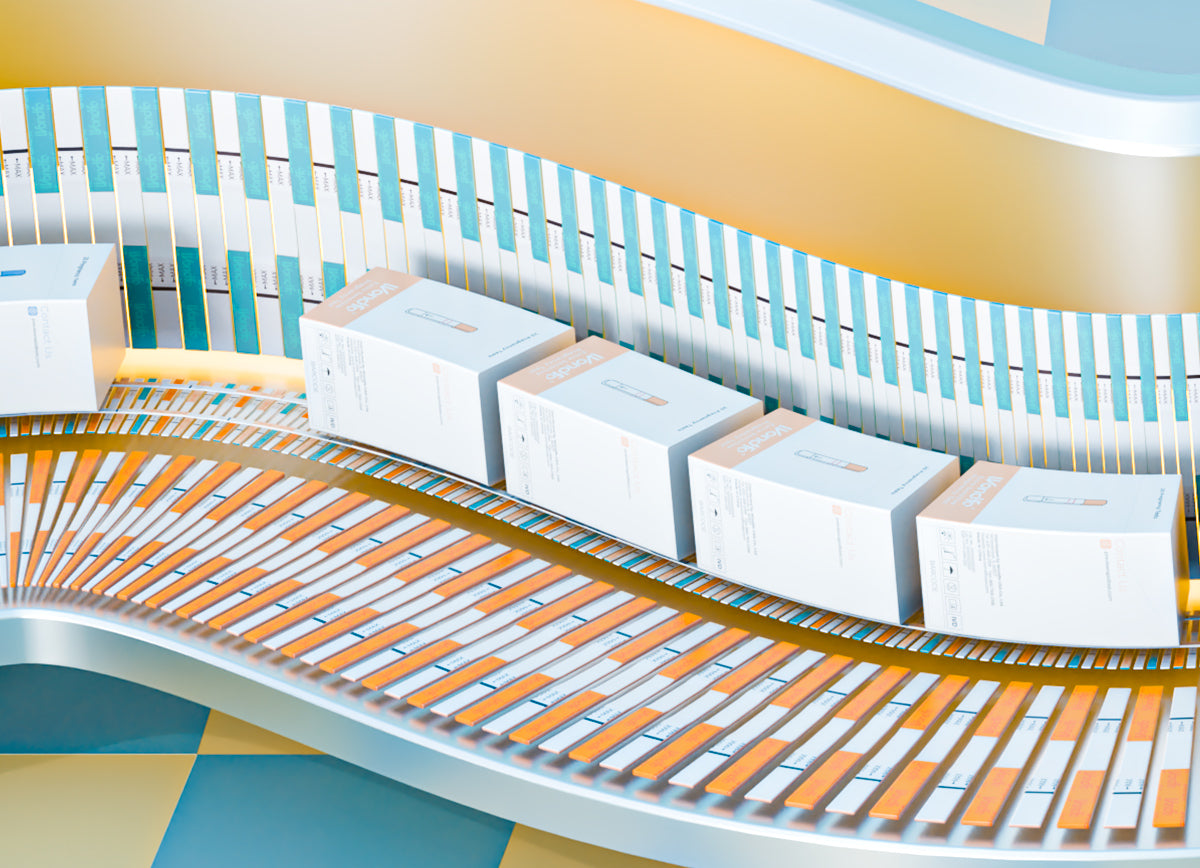What Is an Ovulation Test?
An ovulation test, also called an ovulation predictor test, OPK, or ovulation kit, is a home test that checks your urine to let you know when you’re most likely to be fertile or get pregnant. When you get ready to ovulate, which means to release an egg for fertilization, your body creates more luteinizing hormone (LH).
By detecting a surge in LH, it helps predict when you will ovulate. Knowing this helps you and your partner time sex for pregnancy.
Ovulation Test Kit
What's inside a test kit depends on the type of kit and the brand. There are two types of kits, including:
A test with a stick: This version of the ovulation test includes a stick tool that looks more like a pregnancy test and works by peeing on a part of the test that extends from the stick. This type can also include a digital reader with a rectangle display where your results will appear.
Ovulation kit price: Prices of the kits also depend on the type of ovulation test you choose and the brand. The number of strips included in the package or whether the test includes digital test results can affect the price. In general, the prices range from $17 to $50.
Where to Get an Ovulation Test
You can buy ovulation tests at most drugstores. These kits usually come with test sticks or paper strips. You can also buy a digital ovulation test that connects a test stick to a digital reader.
When to Take an Ovulation Test
For women with average 28- to 32-day menstrual cycles, ovulation usually happens between days 11 and 21. You’re most likely to become pregnant if you have sex 3 days before ovulation.
If your typical menstrual cycle is 28 days, you would perform an ovulation test 10 or 14 days after starting your period. If your cycle is a different length or irregular, talk to your doctor about when you should take a test.
You should start to test during the time you're expected to be fertile, once a day. A positive test lets you know you're about to ovulate (usually within 36 hours) and to have sex that day and/or the next day.
When is the best time to take an ovulation test?
You can take an ovulation test at any time of day. But the morning may give you the best results. To boost your chance of an accurate reading, don’t drink a lot of fluids in the 4 hours before a test. This helps make sure your pee and LH levels are concentrated.
How to Take an Ovulation Test
Read the instructions in your ovulation predictor kit. Not all tests work the same way. Typically, you’ll follow these steps:
1. Unwrap a test stick and remove the cap from the absorbent tip.
2. Insert the test stick into the test holder and listen for it to click in place. The test ready symbol will appear on the test holder.
3. Place the absorbent tip of the test stick in your urine stream for 5-7 seconds. You can also collect a sample of your urine in a clean, dry container and dip the absorbent tip of the test stick into the sample for 15 seconds.
4. Leave the absorbent tip pointing down for about 20-40 seconds until the test ready symbol begins flashing. Replace the cap on the test stick and wipe off any excess urine.
5. Within 3 minutes, you should get a test ready symbol. The display will show either an empty circle, indicating a negative result, or a smiley face, indicating a positive result. If the test ready symbol doesn’t start flashing, the test didn’t work and an error symbol will appear on the display within 10 minutes. You’ll need to take the test again using a new test stick.
6. Press the “Eject” button to remove the test stick. Wipe the test holder clean and wait until the display clears before inserting a new test stick.
If the version you're using is not digital, the results will appear as a single (not fertile) or double line (fertile).
How to Read Ovulation Test Results
Each ovulation test is different, but testing strips respond to LH levels in your pee and show whether you'll ovulate soon or not. How the results show on the test will vary from one line or two lines, smiley face symbols, or a "yes" or "no."
Other digital versions can tell you your fertile days. You can use the highest point as a positive result, letting you know you'll ovulate soon.
Will an ovulation test be positive if pregnant? Although both pregnancy tests and ovulation tests respond to changes in hormone levels, they are different. Ovulation tests react to high levels of LH, while pregnancy tests respond to the levels of human chorionic gonadotropin (hCG). Both hormones are similar in structure and function. Because levels of hCG can be seen as early as 8 days after ovulation, it could be possible for an ovulation test to pick up on levels of hCG, also resulting in a positive ovulation test.
It's best to confirm pregnancy with a pregnancy test. Pregnancy tests can tell the difference between whether you're just ovulating (LH levels) or actually pregnant (hCG levels).
Faint line on ovulation test
The first line on the ovulation test, or the control line, just lets you know the test strip is working. The second line, called the test line, shows your ovulation. If the test line is as dark as or darker than the control line, this means that the LH levels in your body are higher than usual and you’re probably ovulating or about to begin ovulating.
If the test line is lighter in color or faint, this means that your LH levels are too low and you haven’t begun ovulating yet.
How Ovulation Predictor Kits Can Help With Pregnancy
If your ovulation test gives a positive result, it indicates a surge in LH in your urine. That means ovulation should begin within a day or two. Couples planning to become pregnant should have sex within the 3 days following a positive test. This boosts the chances of an egg becoming fertilized once it’s released from the ovaries.
How soon after ovulation can you test for pregnancy?
Some pregnancy tests can tell you if you're pregnant as early as 8 days after ovulation, meaning you could have a positive pregnancy test many days before you expect the beginning of your period.
Advantages of Using an Ovulation Test
Ovulation predictor kits help couples plan for pregnancies but come with pros and cons. Advantages of using an ovulation predictor kit include:
- Ease of use. Ovulation predictor tests are easy to use and work much like home pregnancy tests. Each kit includes several test sticks or strips, which let you test multiple times.
- Effective detection. Ovulation tests are 97% accurate in detecting an LH surge, making them highly effective at predicting ovulation.
- Availability. Ovulation tests can be bought at drugstores and pharmacies and don’t require prescriptions.
- Convenience. Other ovulation detection methods require you to be committed every day. Ovulation predictor tests can be conducted more quickly and conveniently.
Disadvantages of Using an Ovulation Test
Disadvantages include:
- Limited detection. Ovulation tests detect LH levels, but they don’t give you an exact date of ovulation. Eggs may not emerge even after an LH surge.
- Problems testing women over 40. Women over 40 and women near menopause have high LH levels. This makes it less likely for an ovulation predictor kit to give accurate results for this age group.
- Issues with fertility drugs. Women using fertility drugs such as the hormone human chorionic gonadotropin (hCG) may cause ovulation tests to deliver inaccurate results.
- High price. Ovulation test kits are expensive, and you may want to test repeatedly. That can add up.
Takeaways
Ovulation test kits can be a good way to start tracking your ovulation in order to become pregnant. It's best to use them. There are a variety of options, from testing strips to digital ovulation test versions. You should start to test during the time you're expected to be fertile, once a day. A positive test lets you know when you're about to ovulate and when to have sex. Talk to your doctor if you have trouble tracking your ovulation, such as never getting a positive result.
Ovulation Test FAQs
- Can an ovulation test detect pregnancy? It's possible because the hormones that are detected in ovulation tests and pregnancy tests are similar. It's best to confirm you're pregnant with a pregnancy test.
- Can I use an ovulation app, or should I use an ovulation kit? Each person may have different needs when they're tracking ovulation. Using an app can make it easy to track your cycle. Apps let you enter information about your periods and give you the time frame when you're most fertile, letting you know to have sex at least every other day around that time. If you're not pregnant after about 6 months, you could use both the app and an ovulation kit to help.
- How long after a positive ovulation test are you fertile? The fertile window usually includes the days just before, the day of, and the day after ovulation. Your chances of becoming pregnant are highest when you have sex 1-2 days before and on the day of ovulation.
Credit: https://www.webmd.com/baby/how-to-use-an-ovulation-test



